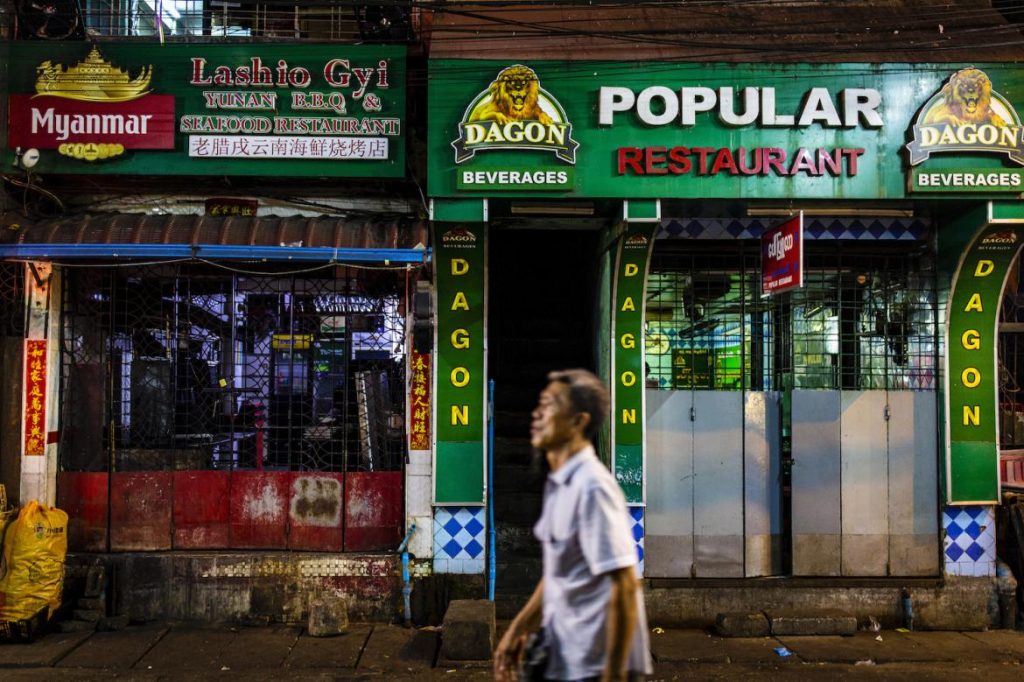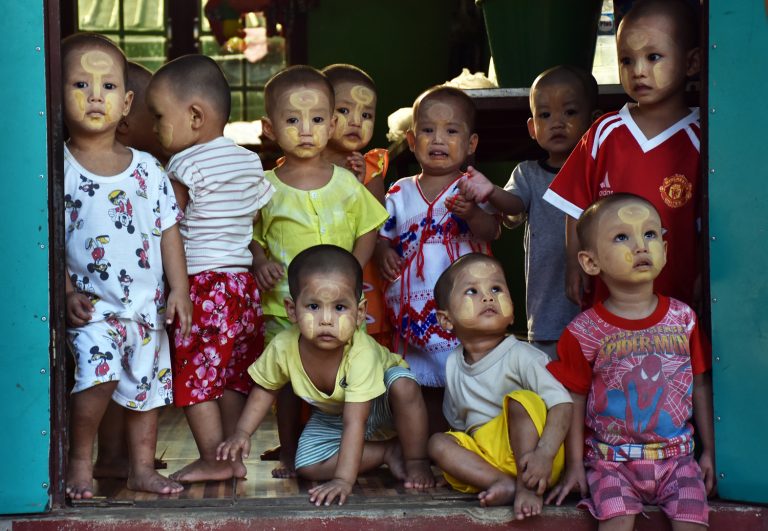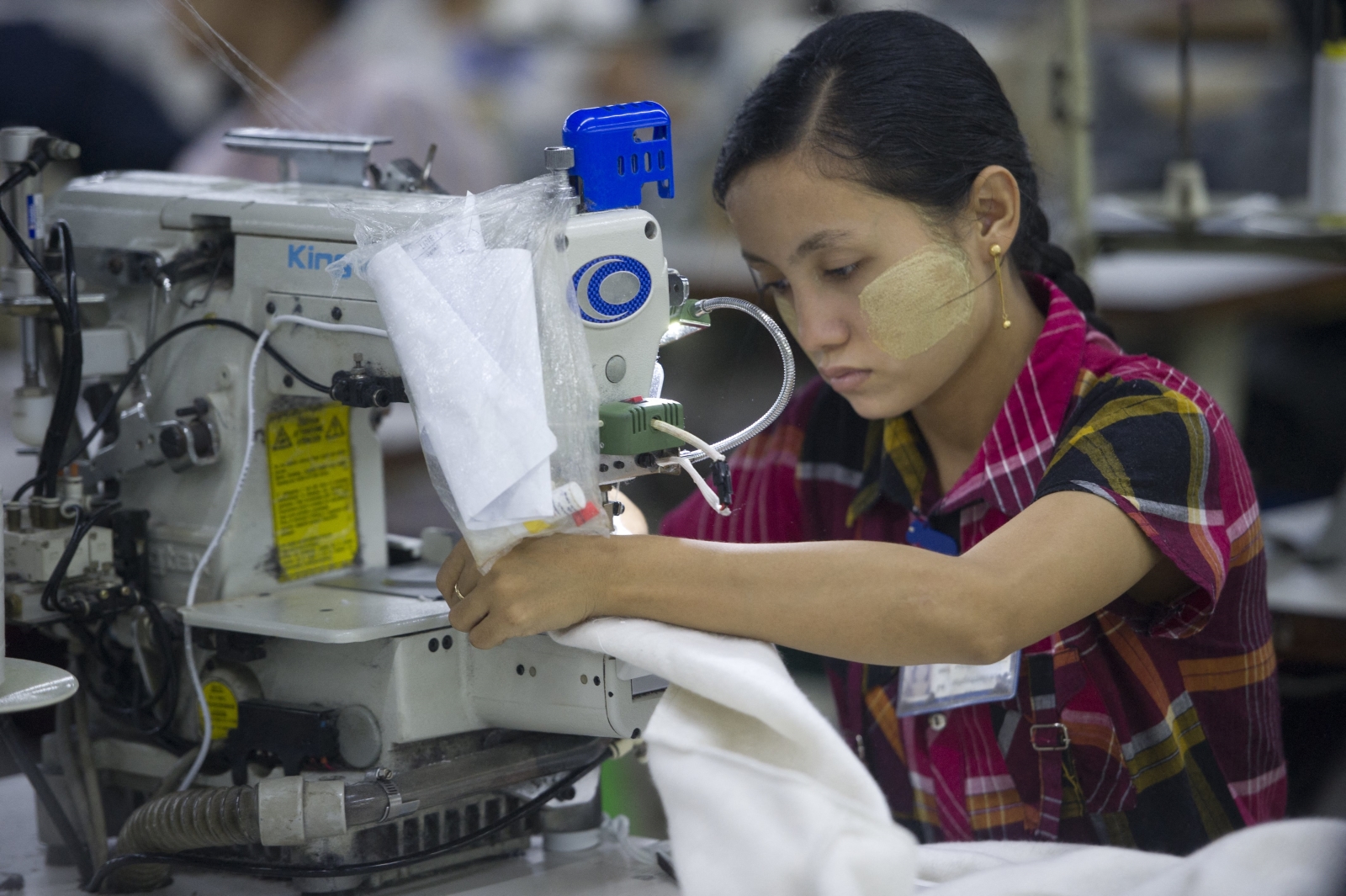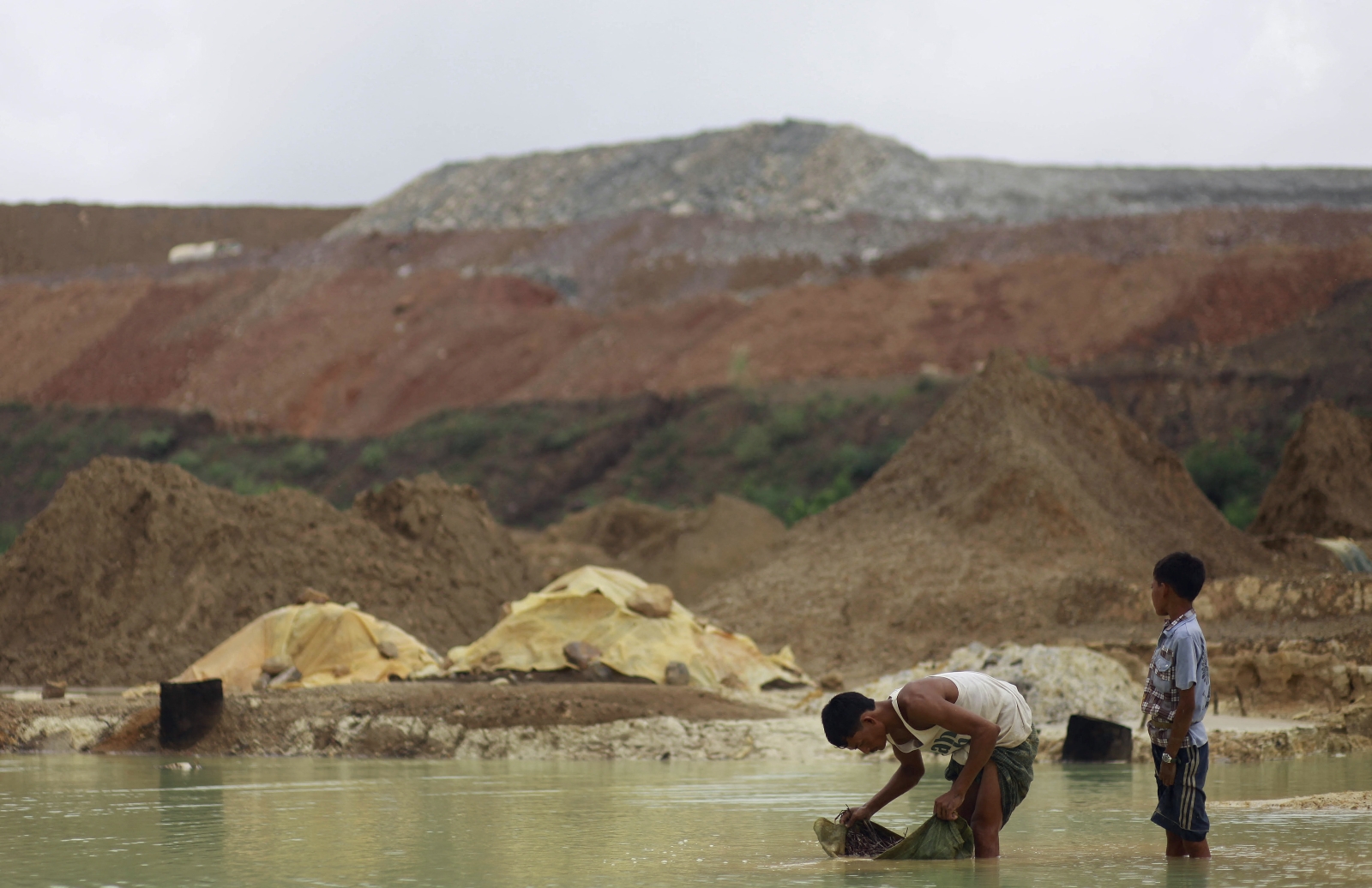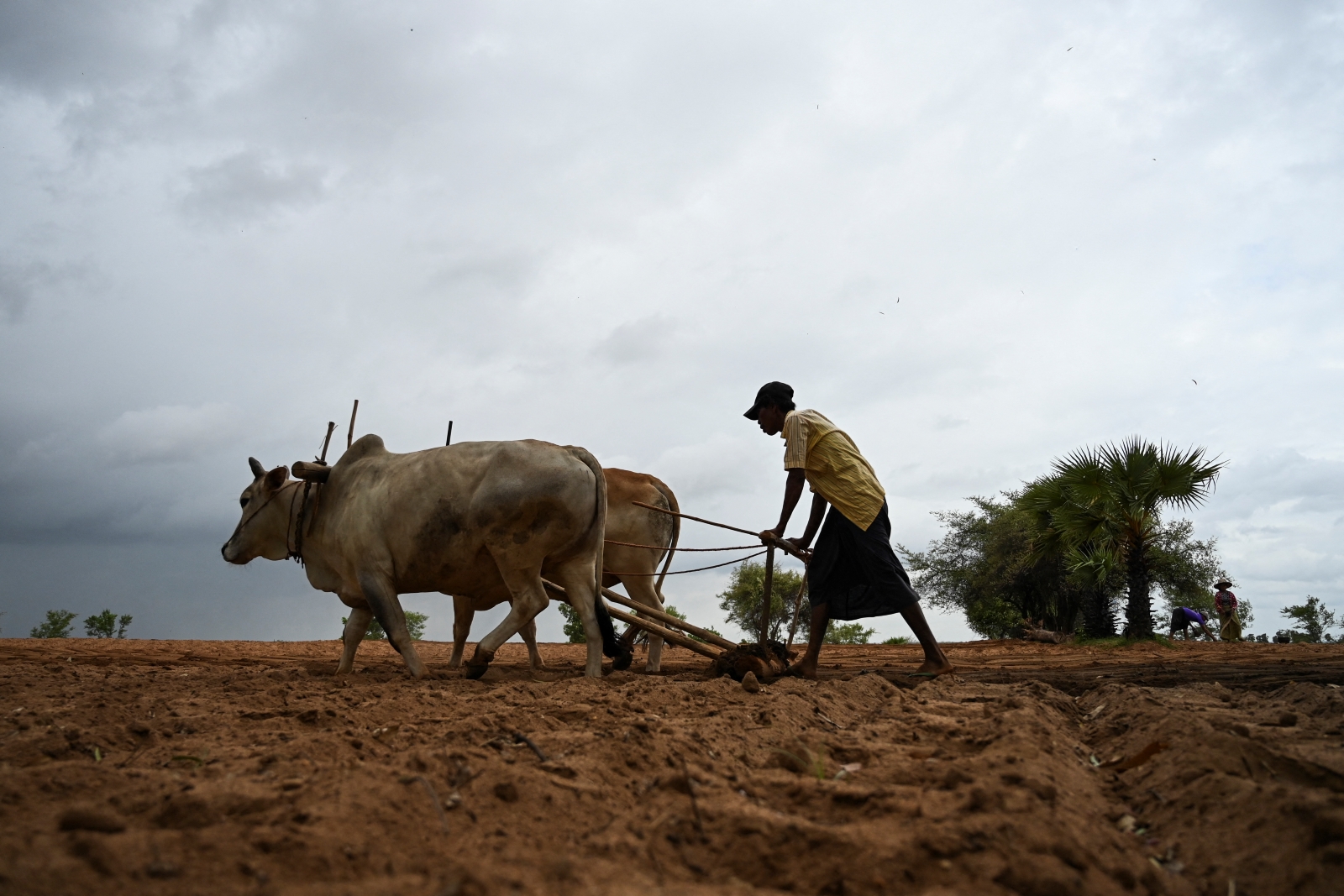The government has unveiled a range of measures aimed at shielding the economy from the impact of COVID-19 but the package is relatively conservative and more may be needed to sustain struggling businesses.
By THOMAS KEAN | FRONTIER
The government released its COVID-19 Economic Relief Plan yesterday, outlining a suite of measures it plans to take to cushion businesses, households and individuals from the economic fallout of the pandemic.
The 15-page document contains seven goals, 10 strategies, 36 action plans and 76 actions for responding to the crisis, including an expansion of low-interest loans to affected businesses, cash-for-work and lending programmes for rural areas, and measures to shore up the country’s teetering banks.
The plan “seeks to mitigate the inevitable economic impact posed by COVID-19 while establishing foundations that will facilitate Myanmar’s rapid economic recovery”, State Counsellor Daw Aung San Suu Kyi said in a foreword.
Aung San Suu Kyi said the plan “balances the needs of all stakeholders while leaving no-one behind”.
Support independent journalism in Myanmar. Sign up to be a Frontier member.
“By acting now, decisively, we can ease the economic burden faced by individuals and households, strengthen the capacity of our frontline healthcare workers – our nation’s new heroes – and shore up our nation’s macroeconomic position so that, once this is over, we will be ready to face the future from a position of strength.”
The plan’s signature measures include expanding a K100 billion (about US$70 million) loan fund established in March to at least K200 billion and as much as K500 billion, fast-tracking private and state investment in key infrastructure projects, and offering government guarantees of up to 50 percent on some loans from private banks.
The plan comes as the International Monetary Fund cut its forecast for Myanmar’s economic growth in 2020 to just 1.8pc, down from its earlier estimate of 6.4pc.
‘The economic impact is huge’
U Aung Naing Oo, permanent secretary of the Ministry of Investment and Foreign Economic Relations, said the government was deeply concerned at the impact COVID-19 was having on businesses, both as a result of the global economic downturn and domestic measures to contain the spread of the virus.
“Almost all businesses in the country are suffering seriously from coronavirus. Some have almost collapsed, most are suffering,” he said during a webinar hosted by AustCham Myanmar on April 28. “Currently the impact was more on garment businesses and the hotel and tourism sector but the impact will be more in other sectors in a few weeks to come.”
Aung Naing Oo is a member of the Working Committee to Address the Possible Impacts of COVID-19 on the Country’s Economy, chaired by Minister for Investment and Foreign Economic Relations U Thaung Tun. He said the committee was coordinating with other ministries to help support businesses through this difficult time as best it could.
“The economic impact is huge, it is unprecedented, it is an unforeseen challenge but our committee, which includes a number of ministers, is working closely and finding the best way to respond to the impact of COVID-19, particularly the economic impact,” he said.
He said the government had received more than 3,800 applications for loans from the K100 billion fund, and had so far approved about 200 totalling K10.5 billion. The loans incur interest of 1pc and are repayable in a year. “We will keep providing soft loans to businesses,” he said. “This is just the initial stage, there will be more to come.”
Turning to the issue of foreign investment, Aung Naing Oo said the Myanmar Investment Commission was continuing to receive and process applications for permits and endorsements, and had approved two permits earlier that day. Total investment approved from October 1, 2019 to March 31 was $3.3 billion, up from around $1.9 billion over the same period last year, and another $1.5 billion of projects had been submitted but awaiting MIC approval, he said. Some major infrastructure projects are also “under discussion with line ministries and hopefully they can be submitted to MIC in the months ahead”, he added.
However, Aung Naing Oo conceded that COVID-19 was likely to lead to a drop in actual inflows of foreign investment, as companies delay or re-evaluate projects. Already inflows had fallen in the first quarter of this year to $500 million from about $800 million in the same period last year.
“My concern is that although more investment was approved, the actual inflow of FDI will be a challenge for us,” he said.
Too conservative?
Despite this, the COVID-19 Economic Relief Plan is more conservative than some observers may have hoped, with no wage subsidies or tax holidays for affected firms. Instead, there are tax deferrals for businesses and credits for those that retain staff, and support measures for laid-off workers funded through the Social Security Board.
Similarly, there are no plans for a universal cash transfer. Instead, the government will introduce cash transfers of “an appropriate amount … to most vulnerable and affected households” through mobile cash transfers. However, it provides no details on the programme beyond that it will transfer “as much as practically possible” and will start before the end of the year.
The plan contains several other measures to ease the impact on households, including the continuation of handouts of basic commodities, like those that took place during Thingyan, and cash transfers to new mothers and the elderly. It will also launch labour-intensive community infrastructure projects to create jobs, rural cash-for-work programmes, and cash and loans for farmers, but no further details were given on the planned scale of these.
As Frontier reported on March 26, policymakers have been divided over how to respond to the economic fallout from COVID-19. Among more conservative policymakers there is a desire to maintain the country’s newfound fiscal prudence, even amid a global recession, and not borrow too much from foreign sources or finance a larger budget deficit through Central Bank lending.
This has, however, put them at odds with those who argue that Myanmar needs a much more aggressive stimulus, similar to what many developed and developing countries around the world are already undertaking, sources said.
Aung Naing Oo revealed that although the working committee had pushed for a reduction in the corporate tax rate, which currently stands at 25pc, the Ministry of Planning, Finance and Industry had instead decided to only defer payments.
Budget reallocations
The stimulus measures will be financed in part by cutting the 2019-20 budget of each “government entity” by “as much as practically possible up to 10pc” and then reallocating the savings to the COVID-19 fund established in March.
Aung San Suu Kyi said reallocations rather than additional spending were necessary because the fallout from COVID-19 will hit tax revenues, but she added that they will “not come at the expense of hard-fought-for fundamental social and economic freedoms now enjoyed in Myanmar. Nor shall our nation’s economic response involve cutting down our social services or increasing taxes on labour and investment,” she said.
With a sizeable deficit still likely, the plan also allows the government to increase its borrowing from the Central Bank of Myanmar – a practice it has been moving away from – and explicitly states that treasury bond and treasury bill auctions will be scaled back.
The government will also draw on loans from multilateral financial institutions and other development partners, but the plan targets borrowing a modest $50 million to $500 million from these sources by the end of the year. The World Bank has already approved a $50 million loan to Myanmar, most of which will go towards boosting Intensive Care Unit capacity.
The plan also outlines a range of measures to support the private banking sector, which has been weighed down by large volumes of non-performing loans (NPLs).
The Central Bank has already cut interest rates three times by a total of 3pc since March 12, lowered the minimum reserve requirements from 5pc to 3.5pc of total deposits, and pushed back by three years deadlines for the banks to restructure NPLs, to August 2023.
In a new and significant measure, the plan says the government will further ease the impact of possible NPLs on the banks by establishing an “Asset Management Company through which potential NPLs held by banks could be set aside for five to seven years allowing banks some breathing space and contribute towards credit growth”. No further details were provided.
Meanwhile, the government will also fast-track plans to merge the Myanmar Economic Bank and the Myanmar Agricultural Development Bank, the plan says, and will undertake credit auctions as necessary to inject more liquidity into the market.


